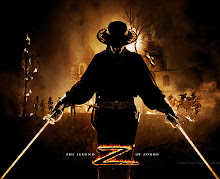Whether your videotape library consists of family movies or all five seasons of The A-Team, it’s time to convert those clunky old tapes to DVD. Discs take up less room, and the video won’t degrade over time as it does with tape. You can even edit the footage and create menus just like those on prerecorded DVDs. And prices on both set-top and PC-based DVD recorders just keep falling. Here’s a quick primer on the two ways to make a disc.
Option 1: Use a set-top DVD recorder
Set-top DVD recorders can both play discs and record onto blanks from a TV, VCR or camcorder. Just plug in your source, hit “record,” and follow the onscreen instructions. Most DVD recorders insert chapter breaks at set intervals (say, every five minutes), but you can create your own by pausing the recorder and source. At these break points, an onscreen keyboard allows you to type a short title with the remote control. You can also perform simple linear editing—cutting out scenes but not moving them around—by pausing the recorder or by deleting chapters using the onscreen menu. Oh, and always use the best connection method available (in descending order of quality): FireWire, S-video or RCA.
Option 2: Use a pc with a DVD burner
A PC-based DVD recording system opens up far more editing options—rearranging scenes or adding fancier titles and a photo slideshow. [Look for reviews of video-editing software in next month’s H2.0.] But if your PC is more than a few years old, you may want to consider an upgrade. It should have at least a 1GHz processor, 512MB RAM, a decent video card and USB 2.0, FireWire or traditional A/V inputs. The DVD recorder can be either external or internal (the latter is less expensive). Since you’ll be temporarily storing the video on your PC—and an hour uses 13 GB of space—you may want to invest in a second hard drive (100GB 7200rpm external drives can be found for less than $100 on dealnews.com).
Unless your PC has analog- video inputs, you’ll also need a video-capture device—a black box that connects your video source to your PC and converts the video from analog to digital as it’s being imported. Entry-level boxes, such as ADS Tech DVD Xpress 2.0, often sell for less than $100 (search streetprices.com). Better models offer more connection and encoding options. HP’s $300 DVD Movie Writer even has a built-in DVD-burner (hp.com).
Tips:
Data-transfer rate: Use the best (or one-hour) mode when transferring home movies, which are likely to have scenes with camera shake and low light. A higher compression rate will allow you to fit more video, but scenes with those defects can end up looking worse than they do on the original tape.
Data conversion: If you’re recording with a PC, import your footage to the hard drive in DV format, which is uncompressed and gives you access to individual frames for editing (unlike compressed MPEG-2, the format you’ll convert it to for burning the DVD). Even if you don’t plan to do any editing, don’t use the “direct” or “on the fly” burning option, which bypasses the hard drive completely—copies made that way are more susceptible to errors such as skipping, dropped frames and pixelation.
Formats: Blank DVDs come in three formats: DVD-R/RW, DVD+R/RW and the less common DVD-RAM. There’s no real difference between DVD- or DVD+, but the write-once discs (-R, +R) will last two to three times as long as the estimated 30-year life of the rewriteable kind (-RW, +RW, -RAM).
Archiving: To get maximum archival life from your DVDs, store them upright in cases in a dark, cool, dry area. Use only a non-solvent-based felt-tip permanent marker to write on them, and don’t use adhesive labels. Ink-jet printing systems specified for optical discs are also fine. Finally, back up your library: With high-quality discs as cheap as 50 cents each, it doesn’t hurt to make one or two extra copies.
Brand-name vs. generic discs: Buy blank DVDs from established brands, not cheapie blanks from no-name suppliers, whose lower quality-control standards may reduce the price but make the discs more likely to contain one of two flaws. The first is poor substrate coating (and any contamination by debris), which can leave “dropouts” in the disc’s recording media, leading to data loss when burning—not a big deal with analog waveforms (say, on audio/videotape), but deadly in the digital world of zeros and ones. Second is so-called laser rot: pinholes or poor edge bonding and sealing in the clear protective coating above the recording media substrate can admit air and moisture over time, spoiling the dyes themselves or making the disc less reflective and thereby not readable.
By Stephen A. Booth
Subscribe to:
Post Comments (Atom)




No comments:
Post a Comment